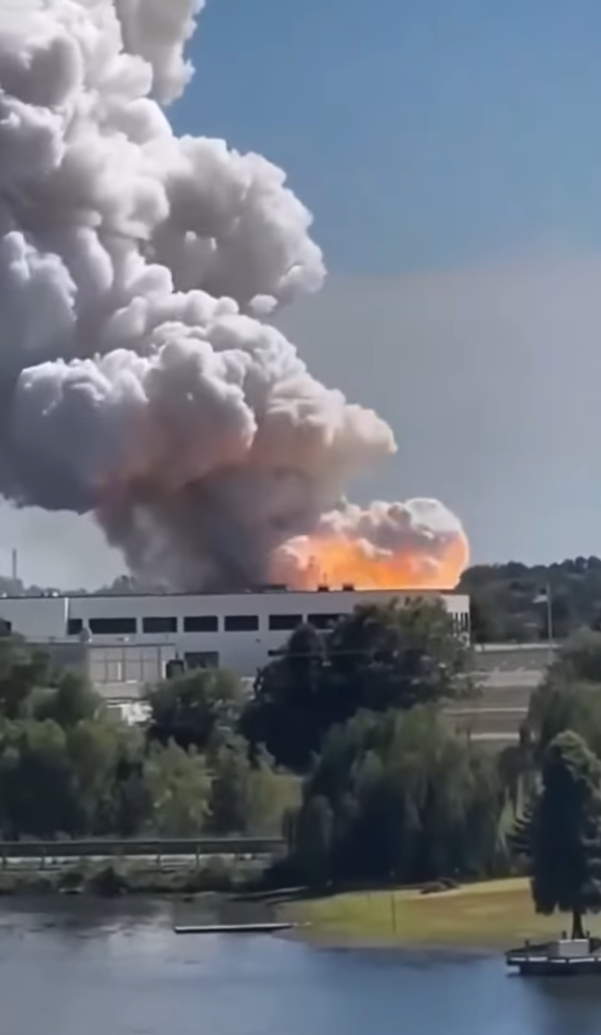When Chemical and Industrial Fires Remind Us of the Importance of Safety and Preparedness
There are days when local communities are reminded of just how vital safety protocols, rapid emergency response, and public awareness truly are. One such event happened recently in Newburgh, Indiana, where a fire involving chemical materials led authorities to issue precautionary advisories for residents. While emergency crews worked tirelessly to bring the situation under control, the incident highlighted not only the immediate risks but also the broader necessity of preparedness and clear communication.
This article takes a closer look at the event, explains why shelter-in-place advisories are sometimes issued, and outlines how communities can protect themselves during environmental emergencies. The purpose is not to create panic but to provide clarity and reassurance.
What Happened in Newburgh?
Initial reports confirmed that a chemical fire had broken out in Newburgh, mobilizing fire crews and emergency management teams. As a precaution, officials advised residents in certain areas to limit outdoor activity and keep doors and windows closed while air quality tests were conducted.
By around 3:33 PM CDT, local outlets reported that multiple fire crews were already on the scene. While residents began sharing updates on social media, officials stressed the importance of relying on official sources for accurate information.
Why Do Authorities Issue Shelter-in-Place Advisories?
When fires involve chemical substances, smoke may contain harmful particles or gases. A shelter-in-place order does not necessarily mean there is immediate danger to everyone but serves as a preventive measure until environmental data confirms that conditions are safe. Closing windows, shutting off HVAC systems, and sealing entry points help reduce exposure.
What Makes Chemical Fires Different?
Material composition – Unlike ordinary fires involving wood or textiles, these may involve plastics, solvents, or other compounds that release toxic gases.
Smoke behavior – The spread depends on wind, humidity, and temperature.
Potential irritants – Some fires cause eye, nose, or throat irritation, while others release more hazardous fumes.
Specialized equipment – Firefighters often require advanced protective gear and containment tools.
How Emergency Crews Respond
Scene assessment – Identifying the materials involved or applying chemical-risk protocols if unknown.
Containment – Using foams, barriers, or other specialized methods.
Air monitoring – Testing particulate and toxin levels in surrounding areas.
Public communication – Giving clear guidance on whether residents should evacuate or remain indoors.
The Importance of Verified Information
During emergencies, social media can spread unverified rumors quickly. Authorities in Newburgh reminded residents to rely only on announcements from fire departments, emergency management agencies, and trusted news outlets.
What Residents Can Do to Stay Safe
Follow official instructions.
Seal homes by closing windows, doors, and ventilation systems.
Keep an emergency kit with water, food, masks, and first-aid supplies.
Stay connected through radios, official websites, or text alerts.
Check on vulnerable neighbors.
Avoid panic—remember that advisories are often precautionary.
Environmental Impact and Recovery
Even after a fire is extinguished, chemical residues can affect soil and water. Environmental agencies often continue monitoring for weeks or months. Recovery efforts typically include reassurance from authorities, support for residents, and reviews of the emergency response to improve future preparedness.
The Springfield Example
Another incident occurred in Springfield, where an early-morning explosion at a trucking company triggered a major fire. The first calls came in at 5:13 a.m., and by the time firefighters arrived, flames had already spread through the roof. Fortunately, no one was injured.
Crews escalated to a three-alarm fire, using up to 2,500 gallons of water per minute to contain the blaze. Thanks to their quick response, the flames were confined to one section of the repair facility instead of destroying the entire building.
Final Thoughts
Both the Newburgh and Springfield incidents show how suddenly industrial and chemical emergencies can arise. They remind us of the importance of:
Continuous public education on safety.
Relying only on verified information sources.
Collaboration between residents and emergency authorities.
Staying calm, informed, and prepared is the strongest defense any community can have against unpredictable events.
